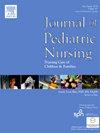使用万花筒对4至12岁儿童侵入性手术疼痛水平的影响:一项系统综述
IF 2.3
4区 医学
Q2 NURSING
Journal of Pediatric Nursing-Nursing Care of Children & Families
Pub Date : 2025-09-22
DOI:10.1016/j.pedn.2025.09.011
引用次数: 0
摘要
背景:有创性手术是儿科患者手术疼痛的主要来源。虽然常规使用药理学方法,但非药理学方法,如视觉分散技术,在以儿童为中心的护理中越来越突出。目的:本系统综述旨在评价万花筒在4 ~ 12岁接受有创手术的儿童中减少手术性疼痛的效果。材料与方法系统检索了6个电子数据库(PubMed、Web of Science、Scopus、WILEY Online Library、Medline和ScienceDirect)自成立至2024年11月的文献。随机对照试验(RCTs)发表的英文调查万花筒在儿童侵入性手术中的使用。采用标准化工具评估方法学质量,数据由两名审稿人独立提取。该审查遵循PRISMA 2020指南,并在PROSPERO注册(CRD42025630649)。结果153篇纳入的文献中,9篇rct符合纳入标准,共纳入1460名儿童。所有的研究都报告了在有创性干预中使用万花筒的儿童的程序性疼痛的统计学显著减少。结论万花筒镜是一种有效的、无创的、低成本的治疗小儿疼痛的工具。将万花筒纳入常规儿科护理可以改善儿童在医疗过程中的体验,并支持整体的、循证的护理实践。本文章由计算机程序翻译,如有差异,请以英文原文为准。
The effect of using a kaleidoscope on pain levels during invasive procedures in children aged 4 to 12 years: A systematic review
Background
Invasive procedures are a major source of procedural pain in pediatric patients. Although pharmacological methods are routinely used, non-pharmacological approaches such as visual distraction techniques are gaining prominence in childcentered care.
Purpose
This systematic review aimed to evaluate the effectiveness of kaleidoscope use in reducing procedural pain among children aged 4 to 12 years undergoing invasive interventions.
Materials and methods
A systematic literature search was conducted in six electronic databases (PubMed, Web of Science, Scopus, WILEY Online Library, Medline, and ScienceDirect) from inception to November 2024. Randomized controlled trials (RCTs) published in English that investigated kaleidoscope use during invasive procedures in children were included. Methodological quality was assessed using standardized tools, and data were independently extracted by two reviewers. The review followed the PRISMA 2020 guidelines and was registered in PROSPERO (CRD42025630649).
Results
From 153 identified articles, nine RCTs met the inclusion criteria, comprising a total of 1460 children. All studies reported a statistically significant reduction in procedural pain among children who used a kaleidoscope during the invasive interventions.
Conclusion
Kaleidoscopes represent an effective, non-invasive, and low-cost tool for pediatric pain management during invasive procedures.
Practical implications
Incorporating kaleidoscopes into routine pediatric care may improve children's experiences during medical procedures and support holistic, evidence-based nursing practice.
求助全文
通过发布文献求助,成功后即可免费获取论文全文。
去求助
来源期刊

Journal of Pediatric Nursing-Nursing Care of Children & Families
NURSING-PEDIATRICS
CiteScore
3.70
自引率
8.30%
发文量
291
审稿时长
65 days
期刊介绍:
Official Journal of the Society of Pediatric Nurses and the Pediatric Endocrinology Nursing Society (PENS)
The Journal of Pediatric Nursing: Nursing Care of Children and Families (JPN) is interested in publishing evidence-based practice, quality improvement, theory, and research papers on a variety of topics from US and international authors. JPN is the official journal of the Society of Pediatric Nurses and the Pediatric Endocrinology Nursing Society. Cecily L. Betz, PhD, RN, FAAN is the Founder and Editor in Chief.
Journal content covers the life span from birth to adolescence. Submissions should be pertinent to the nursing care needs of healthy and ill infants, children, and adolescents, addressing their biopsychosocial needs. JPN also features the following regular columns for which authors may submit brief papers: Hot Topics and Technology.
 求助内容:
求助内容: 应助结果提醒方式:
应助结果提醒方式:


